Gemology is a highly specialized field that requires not only extensive knowledge about gemstones, but also the use of specialized tools to analyses, identify and evaluate these gemstones. Each tool serves a unique purpose and allows the gemologist to carry out his or her work with precision and accuracy. In this blog, we will discuss the different tools gemologists use, their applications and the expertise needed to use them effectively.
Table: Types of Gemologist Tools and Their Uses
| Tool | Use | Expertise Required |
| 10x Loupe | Magnification for close examination | Basic to Advanced |
| Microscope | Detailed analysis of internal features | Advanced |
| Refractometer | Measuring the refractive index of gemstones | Advanced |
| Polariscope | Detecting optical properties and inclusions | Intermediate to Advanced |
| Spectroscope | Analyzing light absorption patterns | Intermediate to Advanced |
| Dichroscope | Identifying pleochroism in gemstones | Intermediate |
| Ultraviolet (UV) Lamp | Detecting fluorescence in gemstones | Basic to Intermediate |
| Hardness Test Kit | Determining the Mohs hardness of stones | Basic |
| Electronic Gem Tester | Identifying gemstones based on thermal properties | Intermediate |
| Specific Gravity Balance | Measuring the density of gemstones | Advanced |
| Chelsea Filter | Differentiating between natural and synthetic stones | Intermediate |
Description of Gemologist Tools
10x Loupe (Gemologist Tools)
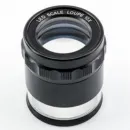
The 10x loupe is a key device for gemologists; it is used for the careful inspection of gems. This portable magnifier helps to identify inclusions, flaws, and other surface proper. This loupe is essential for both beginners and professionals, providing a detailed inspection of a stone’s qualities. Ties. If its use is simple, an analysis of information requires expertise and experience over time.
Microscope
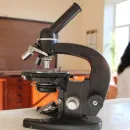
A microscope gives gemologists an in-depth review of a gemstone’s basic structure. It is especially useful for detecting inclusions, which can suggest a gem’s authenticity and origin. We use microscopes to identify synthetic gemstones and treatments that are invisible to the naked eye. Proper use requires important skill in operating the equipment and successfully reviewing the results.
Refractometer
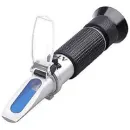
The refractometer measures a gemstone’s refractive index, a crucial optical characteristic for distinguishing different stones. Refractometers enable the differentiation between stones with similar appearances by looking at how light bends within a gem. To get excellent results from mastering this tool, one must be aware of correct calibration and exact interpretation.
Polariscope
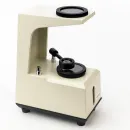
A polariscope examines a gemstone’s visual characteristics, such as birefringence, the splitting of light into two rays as it passes through the stone. You can also use this tool to find internal stress patterns and errors. To use it effectively, you need to have a thorough understanding of how different gems react to light. This implies that users ranging from beginners to advanced can effectively utilize it.
Spectroscope
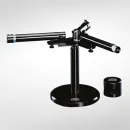
The spectroscope can determine a stone’s composition and whether it is natural or man-made by observing how it reflects light. Gemologists can learn a lot by looking at the range of light that a gem gives out. To use a spectroscope correctly, you need to know a lot about how light behaves and how gemstones act.
Dichroscope
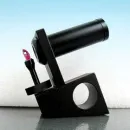
Pleochroism, a feature of gems, causes them to appear to change color when viewed from different angles. The dichroscope can pick this up. When looking at stones with strong pleochroic effects, like tourmaline and tanzanite, this device is very useful. It’s easy to use a dichroscope, but you need to know more about gem optics to understand what the instrument shows.
Ultraviolet (UV) Lamp

UV lamps detect fluorescence in gemstones. This can help you spot certain stones and show off treatments or upgrades. For example, diamonds often fluoresce under UV light, which can prove they are real. This tool is straightforward to use, but you need to know the basics to understand how to read fluorescence patterns correctly.
Hardness Test Kit
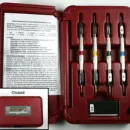
Based on the Mohs hardness scale, a hardness test kit checks how simple it is to scratch a gemstone. This is one of the easiest ways to identify and verify its stone type. If you have never tried it before, you need to be very careful to not damage the stone during the test.
Electronic Gem Tester
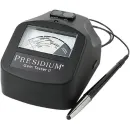
The electric gem tester figures out what kind of gem it is by testing its ability to conduct thermal conductivity. This tool works well for telling the difference between diamonds and moissanites. Calibration and correct reading of results are important for effective approval, so you need basic skills to use it.
Specific Gravity Balance (Gemologist Tools)
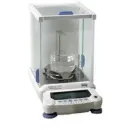
By comparing how much a stone weighs in air and water, the specific gravity balance can figure out its density. This property is critical for identifying gemstones. The uniqueness of this tool lies in its need for careful use and a deep understanding of gemological principles.
Chelsea Filter (Gemologist Tools)
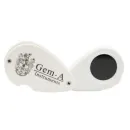
The Chelsea filter is a special tool that helps distinguish between real and fake gemstones. Because it blocks some shades of light, it is especially helpful for finding emeralds and other green stones. You need to have a basic understanding of how to use a Chelsea filter effectively.
Importance of Gemologist Tools
Each tool in a gemologist’s kit has a specific function, contributing to the accurate identification, classification and evaluation of precious stones. These tools allow gemologists to carry out their tasks with precision, ensuring that gems are authentic and graded accurately. The use of these tools is essential in the gem industry, where the quality and authenticity of the stones have a direct impact on their market value.
Gemologists must master the use of these tools because their skill directly affects the reliability of their evaluations. Whether you work in a laboratory, a jewelry store, or in the field, the ability to use these tools effectively is essential to maintain industry standards and protect consumers.
Conclusion
Gemology tools are essential to the gemstone industry because they allow professionals to accurately analyze, identify and classify gemstones. From basic tools like the 10x magnifying glass to advanced tools like refractometers and spectroscopy, each tool plays a unique role in the geology process. Understanding the use and expertise required for each tool helps to understand the meticulous work that goes into ensuring the quality and authenticity of gemstones.
As the gemstone market continues to grow and evolve, the importance of these tools and the gemologists who use them cannot be overstated. By mastering these tools, gemologists maintain the integrity of the gemstone industry and ensure that consumers can trust the gems they purchase.
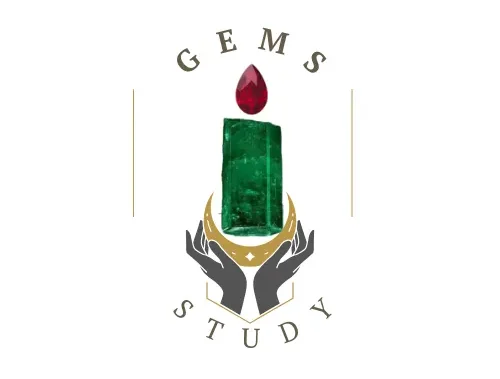
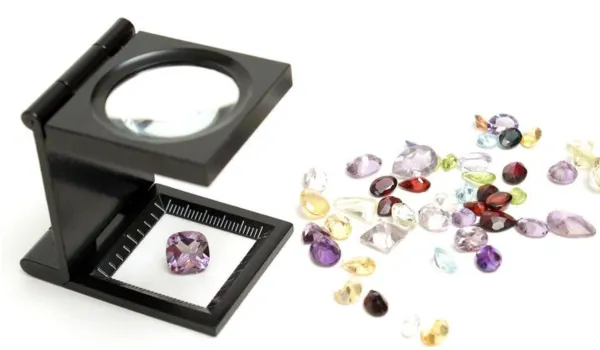
2 comments
What fabulous ideas you have concerning this subject! By the way, check out my website at Webemail24 for content about Nonprofit Organizations.
Hey there, I appreciate you posting great content covering that topic with full attention to details and providing updated data. I believe it is my turn to give back, check out my website Seoranko for additional resources about Vintage/Antiques.